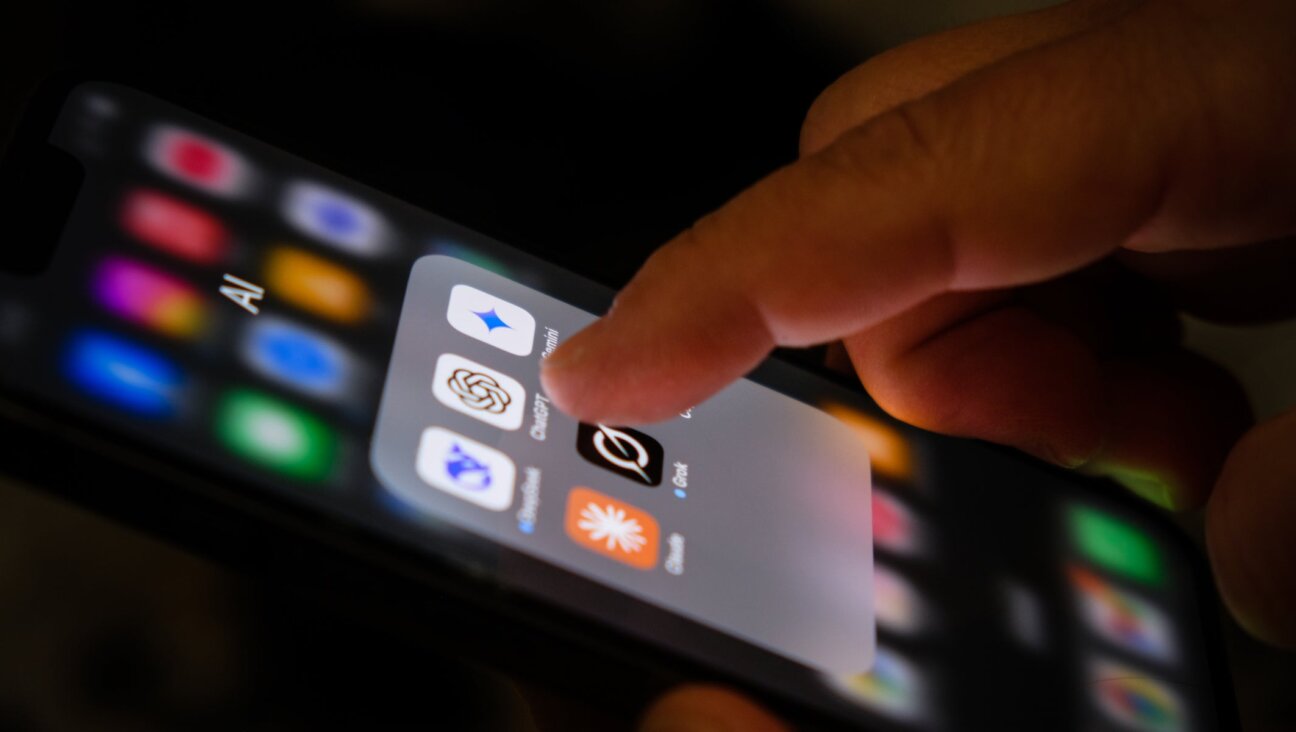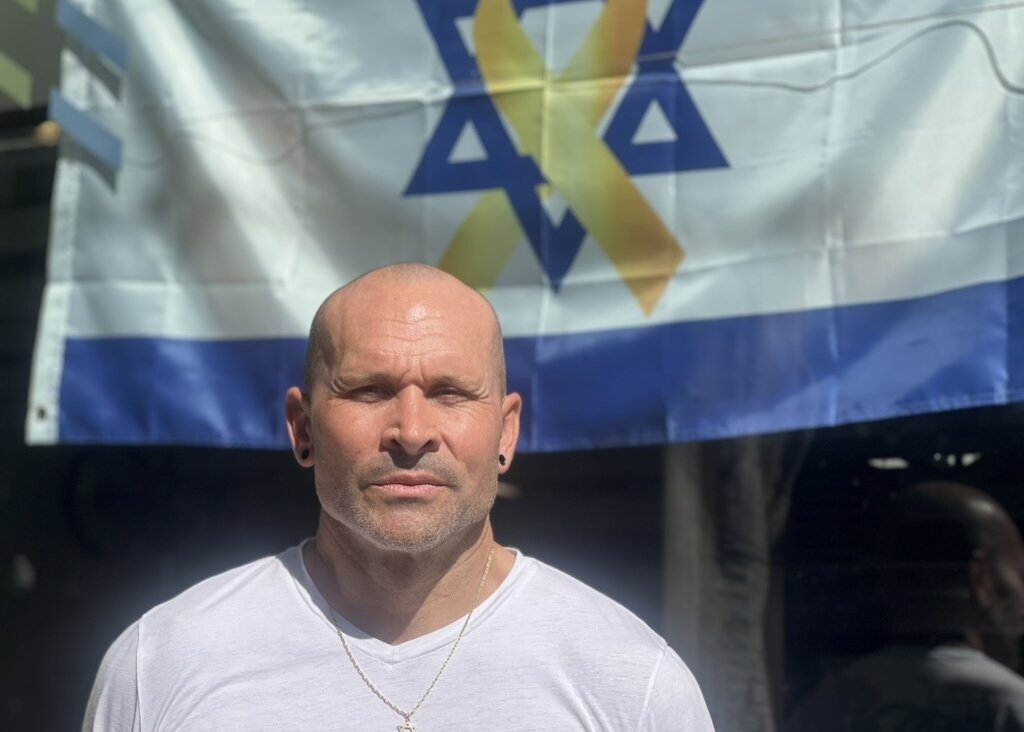This Scientist Argues Climate Change Is Partially Responsible For The Syrian Crisis

Graphic by Angelie Zaslavsky
If, during the unusually warm New York City winter of 2015, you heard that a weather phenomenon called El Niño was partly to blame, you had Mark Cane to thank for that information.
El Niño, according to the National Oceanic and Atmospheric Administration, consists of a series of climactic changes characterized by “a warming of the ocean surface, or above-average sea surface temperatures, in the central and eastern tropical Pacific Ocean.”
Cane, a Brooklyn native, is a professor of Earth and climate sciences at Columbia University. One of two recipients of the 2017 Vetlesen Prize, which, according to its website, rewards “scientific achievement resulting in a clearer understanding of the Earth, its history, or its relation to the universe,” Cane was awarded the prize for his research on El Niño. He helped build the first effective computerized model for predicting the phenomenon, has researched its impacts, and has helped create means to assist communities anticipated to be adversely affected by an El Niño event.
The week of the Vetlesen Prize awards ceremony, in advance of Earth Day, the Forward spoke with Cane over the phone. Read excerpts of that conversation, below.
Talya Zax: Can you give me a general history of your career?
Mark Cane: I went to graduate school to study atmospheric science with Jule Charney, who was the person who made the first numerical weather forecast, and whose thesis was about why there was weather in the first place. I ended up doing a project that involved equatorial oceans. Then in 1977 there was an El Niño event, which changes the weather over the U.S., and in that case it was a year of very persistent cold weather and snow in the Boston area, which is where we were, at MIT.
I got interested in El Niño from that, and the problem at that point was what is El Niño? Why does this happen, and what’s the underlying mechanism? I worked on that with a graduate student, Steve Zebiak, and in 1984 we came up with a model that was able to simulate El Niño, which was the first time that had been done. Around that time I moved to Columbia University, to the Lamont-Doherty Earth Observatory.

Mark Cane gives a lecture at Columbia University. Image by YouTube
A couple of years later, in 1985, we began trying to forecast El Niño events in the cycle, and the model kept telling us there was going to be an El Niño at the end of 1986. We went public with that. Some people got upset at the idea that we were going public, because in those days, unlike now, climate science wasn’t at all politicized. Some people thought you shouldn’t even talk to the public, basically, as opposed to now, when I think it’s recognized that we’re funded by the public and we should talk to the public about what we do. Anyway, that forecast was successful, and it ushered in an era of people trying to improve these forecasts, and that continues to this day.
I’ve worked on a large variety of problems. Some of them involve figuring out what the impacts of El Niño are; some of that work was about how crop yields were affected by the variations in climate around the world that are associated with El Niño. I also did work on water resources, and lately on the relationship between climate variations and climate change and conflict in societies, because it turns out that worldwide, there are more conflicts in an El Niño year than on average, which is an interesting thing to know, and leaves open the question of just why is that? We have ideas about that, but it’s not a settled problem.
More recently, with a former student and some colleagues, we had this paper that made the case that a long drought in Syria contributed to igniting the conflict there, and also that that long drought was made more likely by human-caused climate change. Not surprisingly, that paper is quite controversial. Many people simply don’t like the idea that anything other than human agency could be responsible for such things as war. Other people raised legitimate questions about whether the case we made is as solid as I think it is. One of my great fears about what climate change will do is that by disturbing societies, it will likely lead to migrations, as I think has happened already, and to conflicts in a number of places in the world.
Can you outline for me what your argument was in the paper about Syria?
First of all I think it’s fairly indisputable that there was a very severe drought. Particularly, 2007-2010 were three of the driest years on record; the years around that were also dry, and the drought has continued, in fact, past 2010. We didn’t know that at the time we wrote the paper. And what we see in the data was a downward trend from as far back as the data goes reliably, which we take to be about 1930. There’s also been a paper published since using tree ring information that shows that this was the worst drought in 900 years.
You have a long-term drying trend, but you also have the natural ups and downs that you always have, year-to-year. When you get rid of those it’s bad, and it adds on to the drying trend. That’s when things get really extreme. That’s what happened in this recent period. So we made that case, and then we made the case that aside from human influence on the climate system, there’s no obvious cause for this – that’s from data. And we also made the case that this is what models do when they’re forced by greenhouse gas concentrations.
I usually do quantitative science, and we can’t do a strictly quantitative job on this, but we can see the following kinds of things: We know that there was a large migration from farm communities to the outskirts of cities. These people came to the outskirts of cities like Damascus, and the government was indifferent to people and provided no services. You had a lot of people who were kind of desperate, and there were some demonstrations, and there was a retaliation by Syrian government troops, and that was the spark that ignited this conflict.
People were forced to migrate from the cities, not because there was one year of drought – people can tolerate that – but after two, three years they’d had it. It was really impossible to keep farming. Their livelihoods were no longer viable. Their communities had essentially been collapsed by these mass-migrations out. And then they were in this place where they got no help and conditions were miserable, and that was the trigger.
Now this is a narrative story that’s supported by what people say, and fits the facts that happened, but I have no way of proving that this was absolutely the essential cause. I just know from all the evidence available it clearly contributed to setting off this conflict.
You were recently named one of two winners of the 2017 Vetlesen Prize. Can you tell me about the project of yours that gained you the honor?
Well S. George Philander, the other winner, and I, putting our work together with that of others we essentially developed a lot of the theory about how equatorial oceans work. In my case more specifically, we developed this model and a theory, if you like, of how El Niño and the atmospheric aspect of it called the Southern Oscillation work, and we were able to use that knowledge and that model to make predictions. And then I was involved in founding the International Research Institute for Climate and Society, which tries to not just make predictions of seasonal to interannual changes in climate, but to see how that information can be applied to better people’s lives.
If you know El Niño is coming so there’s a chance of a drought in Ethiopia, what can be done to help people get through that? If you’re in Kenya, and El Niño is coming, how is that going to change the possibilities of malaria risk? If you’re a minister in India, what can you do knowing that an El Niño is coming and it’s more likely that it will be a poor monsoon? In the Philippines, where there’s often droughts during El Niño that affects not just agriculture but hydroelectric generation, then what do you do? All of those things are interesting applied problems, and they’re obviously important to people.
What challenges have you faced, researching El Niño, and how would you evaluate the significance of your work on it?
One of the things you learn by doing this is when you change the paradigm about how things work, it takes quite a long time to get accepted. It’s very hard to speed that up. People just need time to adjust to new ideas. El Niño is pretty well-known now, and the idea that we can make useful predictions is pretty widely accepted, but that took quite a while to establish. It’s not so much that the predictions got better, but it happened a few times and that helped people accept it.
This is basically observational science, and the observations are very limited. Until very recent years, you had almost no idea what goes on in the deep ocean. Electromagnetic radiation, which is what satellites use to send down active radars, doesn’t penetrate into the water. So they see the surface but they don’t see underneath. To see underneath, you have to have something underneath, and it’s a difficult environment: High pressure, salty water. Now we have these almost-fleets of what are called Argo Floats, 3,000 or so floating around the oceans making measurements. They pop up to the surface every once in a while and report to a satellite. and then they go back down again and get some more data. That’s only a network that’s been built over the last 2 decades or so. And even that is imperfect. Maintaining these networks of instruments out there is expensive, satellites are expensive, and right now there’s a serious threat that the flow of data will be interrupted. That would be a terrible shame, because if it’s interrupted you just don’t get it back.
The other thing is we have models that we use to do a lot of experimentation about how this system works, and these models, especially for the ocean, are limited by available computing power. It takes a lot of computing power to model the ocean. There are things going on in the ocean at a scale of a few kilometers; if you want to have a point in the ocean every 10 kilometers, that’s a lot of points. If you want to have it at many depths, and you want to simulate many years, it’s an extremely expensive calculation.
By and large we don’t have the resources to do it. So we settle for less and that makes problems.
We’re publishing this on Earth Day, which this year also marks the March for Science. What messages would you like the general public to know about science at large, and climate science specifically, for the occasion?
People should understand how great a contribution science makes to our society, and how great a contribution government support of science makes. The algorithm for Google was created under a National Science Foundation grant. The work for the kind of science and technological developments behind touch screens, that was also government-sponsored work. One reason my field, atmosphere and ocean science, was well-supported was the major contribution it made during the Second World War. For example, they were able to forecast the lull of bad weather that allowed the D-Day endeavor.
So much basic science that has resulted in cures for diseases, or the kind of instrumentation that allows us to make much better diagnoses, has arisen from basic research that the government supports, that private enterprise is happy to see the government support, because it’s too far from the research that could generate a profit for them to be interested in it.
Another message is that in science no one really knows what’s going to work out. I knew that El Niño was a good problem, but I didn’t know in advance that it would be something where it would be possible to make predictions. I knew it had an impact on people, but I had no idea that it could ever be turned into something practical. The ultimate payoff is impossible to envision.
Supporting this kind of research has paid off enormously. The government doesn’t get to keep the profit, and you could think about changing that or not, but the society as a whole certainly benefits.
We human beings are really good at fooling ourselves in all kinds of ways. Science is what we’ve invented to keep from fooling ourselves. We should know not that science establishes an absolute truth, but it’s a procedure for getting closer and closer to what is true and what is correct. We abandon it at our peril. Right now, it’s dangerous for the planet, for my children, and for your children and grandchildren, if we don’t pay attention to what the science has to tell us.
You’ve historically been an activist associated with progressive causes, notably the Civil Rights Movement. Do you have thoughts on the country’s current moment of protest?
We’re all citizens, and we usually don’t spend a lot of time with that. It’s important when things become political like this that we get out there and get heard.
This kind of activism is a way of reminding people that science is important, that we should stand up for science. People should pay attention to these issues because if they don’t, when they go vote, we are in some danger of having a government, as we have now, that doesn’t understand the value of science, doesn’t understand the value of basic research, is unwilling to rationally consider the evidence for human-intervention in the climate system and what kind of problems it can lead to.
Most of the American people understand that climate change is a fact, and would like a response to it. It’s important that they make sure that their representatives know this. This is one way of getting attention.
You grew up in Brooklyn, graduating from Midwood High School. Any memories of the Brooklyn of your childhood that you’d like to share?
I grew up in a neighborhood that was Jewish, Irish and Italian. In those days the Jewish kids went to the public schools, and the Irish kids particularly and most of the Italians went to Catholic parochial schools. Now in that neighborhood in Brooklyn it’s the Jewish kids who go to the parochial schools.
I grew up in a very Jewish, Yiddish culture. And I miss all that — delis, and all that food that we only eat occasionally now, cause it’s not considered so good for you.
My other great memory, my other key Brooklyn thing was the Brooklyn Dodgers of when I was a kid in the 1950s. The team of Jackie Robinson and Roy Campanella and Duke Snider. It was the pride of Brooklyn. It brought us together. It was racially integrated, so as a child I had African American heroes, before I was aware of much about how race works in this country. The white people and black people on the team got along and worked together, and so on. I think that was an important lesson. Baseball was all-important.
















